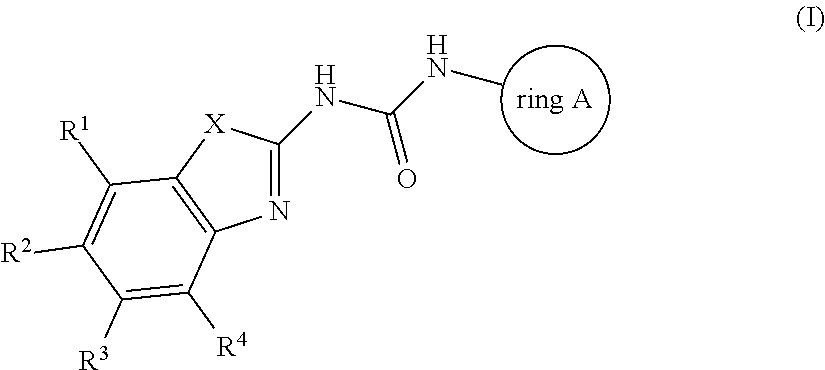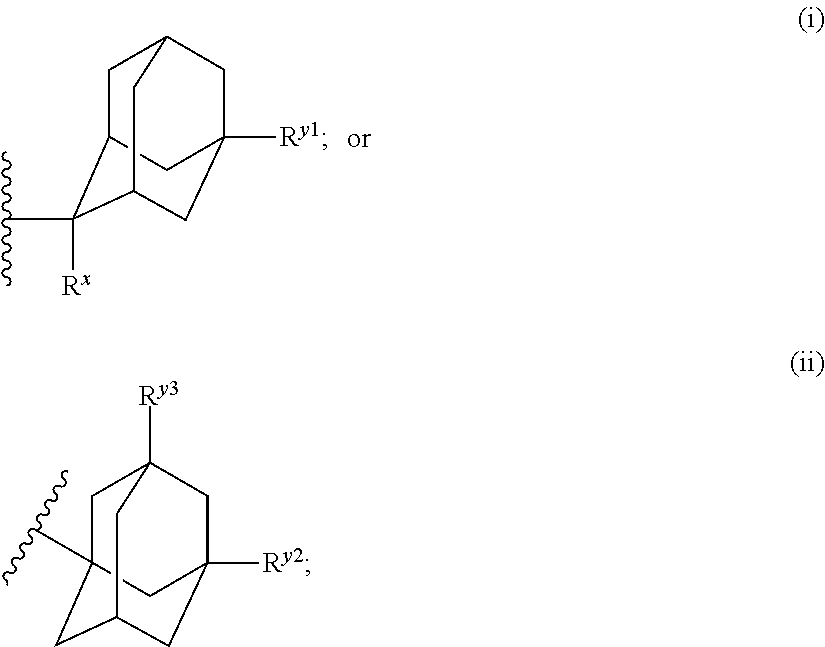Antibacterial compounds
a technology of compounds and compounds, applied in the field of antibacterial compounds, can solve the problems of unfavorable clinical treatment of single agents, lethal mdr-tb, high cost, and marginal effectiveness, and achieve the effects of satisfactory results, uniform dosage, and ease of administration
- Summary
- Abstract
- Description
- Claims
- Application Information
AI Technical Summary
Benefits of technology
Problems solved by technology
Method used
Image
Examples
Embodiment Construction
Preparation of Compound 1
[0168]
[0169]A solution of 2-Amino-4,6-difluoro-1,3-benzothiazole (119256-40-5, 0.22 g, 1.18 mmol), 1-Adamantyl isocyanate (0.42 g, 2.36 mmol) and triethylamine (0.27 mL, 1.97 mmol) in THF (4 mL) was stirred and heated overnight at 60° C. The solution was cooled down to room temperature. Water and DCM were added. The organic layer was separated, dried over MgSO4, filtered and evaporated. The residue was purified by preparative LC on (dry loading 25 g+5 g 15-40 μm merck). Mobile phase (Gradient from 90% HEPTANE, 10% AcOEt to 70% HEPTANE, 30% AcOEt). Pure fractions were collected and evaporated to give a white powder, 0.125 g. This compound was then purified by achiral SFC on (DIETHYLAMINOPROPYL 5 μm 150×21.2 mm). Mobile phase (75% CO2, 25% MeOH). Pure fractions were collected and evaporated to a white powder, 0.09 g.
[0170]The residue was crystallized from DIPE, filtered off and dried under vacuum at 60° C. to give Compound 1 as a white powder, 0.084 g, 20%, m....
PUM
| Property | Measurement | Unit |
|---|---|---|
| time | aaaaa | aaaaa |
| time | aaaaa | aaaaa |
| body weight | aaaaa | aaaaa |
Abstract
Description
Claims
Application Information
 Login to view more
Login to view more - R&D Engineer
- R&D Manager
- IP Professional
- Industry Leading Data Capabilities
- Powerful AI technology
- Patent DNA Extraction
Browse by: Latest US Patents, China's latest patents, Technical Efficacy Thesaurus, Application Domain, Technology Topic.
© 2024 PatSnap. All rights reserved.Legal|Privacy policy|Modern Slavery Act Transparency Statement|Sitemap



